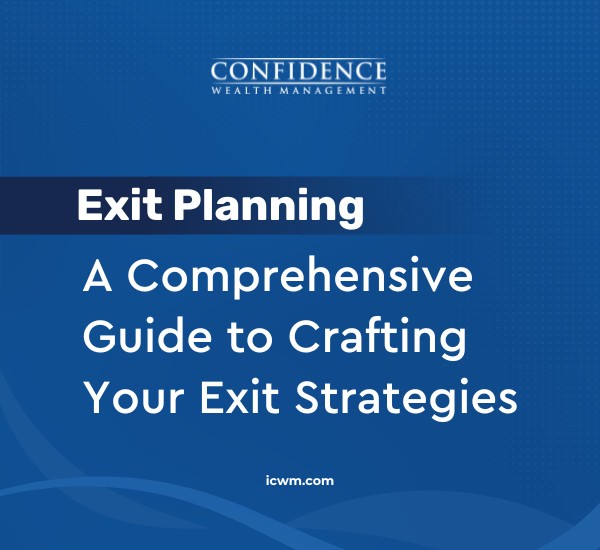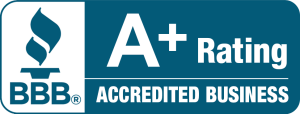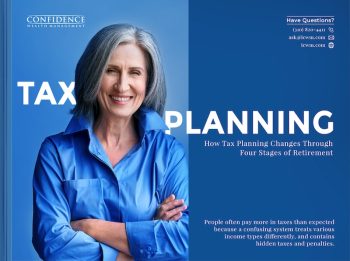I had a client who had a small business, but hadn’t set up a retirement plan. He wanted to focus on other things for his business and didn’t think it was a priority.
I quickly changed his mind.
If you’re self-employed or own a small business, a retirement plan can help you save for the future. Like everything else in investing, the earlier you start, the better.
Here are the reasons to start planning today and the different retirement plan options for small businesses.
Tax Advantages
Like the name implies, retirement plans are built to help you when you retire and no longer have an income. They do this by providing several tax advantages, such as:
- Your contributions are deductible when made
- Contributions aren’t taxed to an employee until they’re distributed from the plan
- Money in the plan grows tax-deferred (or, in the case of Roth accounts, potentially tax-free)
Types of Plans
Retirement plans usually come in one of two forms: IRA-based like SEPs and Simple IRAs, or “qualified” like 401(k)s, profit-sharing plans, and defined benefit plans.
With IRA-based plans, your employees own (i.e., “vest” in) your contributions immediately. With qualified plans, you can generally require that your employees work a certain number of years before they vest.
Qualified plans are generally more complicated and expensive to maintain than IRA-based plans because they have to comply with specific Internal Revenue Code and ERISA (the Employee Retirement Income Security Act of 1974) requirements to qualify for their tax benefits.
Qualified plan assets must also be held either in trust or by an insurance company.
Which Plan Should You Choose?
Each form has its unique advantages and disadvantages, so you’ll need to clearly define your goals before you choose.
Here are some questions to consider as you decide:
- Do you want your plan to be funded by employer contributions, employee contributions, or both?
- Should your plan allow you and your employees to make pre-tax and Roth contributions?
- Should you have the flexibility to skip contributions in some years?
- What plans are the cheapest? Which ones need the least oversight?
SEPs
A SEP allows you to set up an IRA (a “SEP-IRA”) for yourself and each of your eligible employees. You contribute a uniform percentage of pay for each employee, although you don’t have to make contributions every year, offering you some flexibility.
Most employers, including those who are self-employed, can establish a SEP.
SEPs have low start-up and operating costs and can be established using an easy two-page form. The plan must cover any employee who is aged 21 or older, has worked for you for three of the last five years, and who earns $650 or more.
SIMPLE IRA Plan
The SIMPLE IRA plan is available if you have 100 or fewer employees. Employees can elect to make pre-tax contributions in 2022 of up to $14,000 ($17,000 if age 50 or older; up from $13,500 and $16,500, respectively, in 2021).
You must either match your employees’ contributions dollar for dollar — up to 3% of each employee’s compensation — or make a fixed contribution of 2% of compensation for each eligible employee. (The 3% match can be reduced to 1% in any two or five years.)
Each employee who earned $5,000 or more in any two prior years, and who is expected to earn at least $5,000 in the current year, must be allowed to participate in the plan.
SIMPLE IRA plans are easy to set up. You fill out a short form to establish a plan and ensure that SIMPLE IRAs are set up for each employee. A financial institution can do much of the paperwork. Administrative costs are low.
Profit-Sharing Plan
Usually, only you contribute to a qualified profit-sharing plan, not your employees.
Your contributions are discretionary, which means there’s usually no set amount you need to contribute each year. You can even contribute nothing at all, although your contributions have to be nondiscriminatory, along with “substantial and recurring,” for the plan to remain qualified.
The plan must contain a formula for determining how your contributions are allocated among plan participants. A separate account is established for each participant that holds your contributions and any investment gains or losses.
Each employee with a year of service is usually eligible to participate, although you can require two years of service if your contributions are immediately vested.
401(k) Plan
A popular option for small businesses, a 401(k) plan allows employees to make pre-tax or Roth contributions in 2022 of up to $20,500 of pay ($27,000 if age 50 or older; up from $19,500 and $26,000, respectively, in 2021).
These deferrals go into a separate account for each employee and aren’t taxed until distributed. Generally, each employee with a year of service must be allowed to contribute to the plan.
You can also make employer contributions to your 401(k) plan — either matching contributions or discretionary profit-sharing contributions.
Combined employer and employee contributions for any employee in 2022 can’t exceed the lesser of $61,000, up from $58,000 in 2021 (plus catch-up contributions of up to $6,500 if your employee is age 50 or older) or 100% of the employee’s compensation.
Each employee with a year of service is usually eligible to receive employer contributions, but you can require two years of service if your contributions are immediately vested.
401(k) plans are required to perform complicated testing each year to make sure benefits aren’t disproportionately weighted toward higher-paid employees. However, you don’t have to perform discrimination testing if you adopt a “safe harbor” 401(k) plan.
The 401(k) safe harbor plan usually requires you to either match your employees’ contributions
(100% of employee deferrals up to 3% of compensation, and 50% of deferrals between 3% and 5% of compensation) or make a fixed contribution of 3% of compensation for all eligible employees.
Your contributions must be fully vested.
Another way to avoid discrimination testing is by adopting a SIMPLE 401(k) plan. These plans are similar to SIMPLE IRAs, but can also allow loans and Roth contributions.
Because they’re more complicated than SIMPLE IRAs and allow fewer deferrals than traditional 401(k)s, SIMPLE 401(k)s haven’t become popular.
Defined Benefit Plan
The last option on this list, the defined benefit plan, is a qualified retirement plan that guarantees your employees a specified level of benefits at retirement (for example, an annual benefit equal to 30% of final average pay).
As the name suggests, it’s the retirement benefit that’s defined, not the level of contributions to the plan. In 2022, a defined benefit plan can provide an annual benefit of up to $245,000 (or 100% of pay if less), up from $230,000 in 2021.
The services of an actuary are needed to determine the annual contributions that you must make to the plan to fund the promised benefit. Your contributions may vary from year to year, depending on the performance of plan investments and other factors.
Defined benefit plans are usually too expensive and too complex for most small businesses. However, because they can provide the largest benefit of any retirement plan, and therefore allow the largest deductible employer contribution, defined benefit plans can be attractive to businesses that have a small group of highly compensated owners who are seeking to contribute as much money as possible on a tax-deferred basis.
Conclusion
After much discussion, my client changed his mind and picked the plan that was best for him.
As an employer, you have an important role to play in helping you and your workers save. Now is the time to look into retirement programs so you’re prepared for the future.
As experienced financial professionals, we help clients like you figure out the best retirement plan for their situation, so that when they’re ready they can retire gracefully with peace of mind.
Please connect with us and let us help you plan for your dream retirement. We would be delighted to go on the journey with you.










